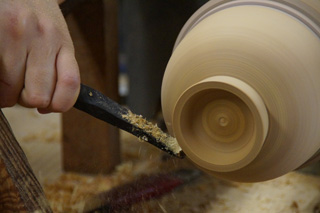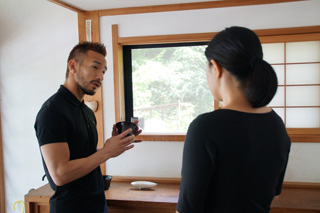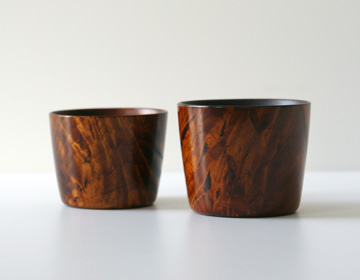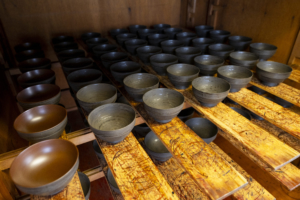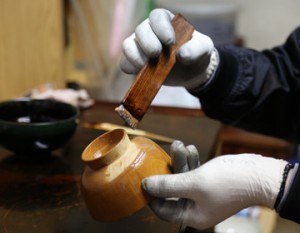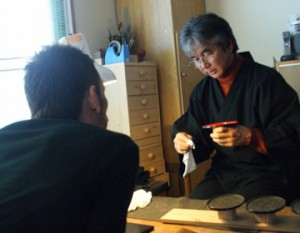Learning from a Human National Treasure
How can one best express the luster of “urushi” lacquer? Gentle, shiny, deep…” The “urushi” bowl in front of me has such deep indescribable luster. This lacquerware was made by Yukiko Hachiya. She was born in Yamagata city and graduated as a Japanese Art major at the Tohoku University of Art & Design. After graduation, she continued her studies at the Ishikawa Prefectural Training Institute of Woodturning where she learned to make bowls. She recalls the four years at the institute as “such a luxurious time in my time. “
“It was such a great environment! I had great teachers. One of my teachers was Master Ryozo Kawakita and he taught me step by step.“ It was not only woodcraft techniques about wood turnery, but he taught but lacquering, from “fukiurushi” to mother-of -pearl inlays, to gold and silver lacquers.
“When we learn all these things, we come to realize how important the basic woodcraft is for lacquerware. If you skip the necessary steps in woodcraft, no matter how you apply the lacquer, it will all show up in the result. I studied from the turnery wood crafting all the way up to lacquering, and it convinced me how important each process is.“
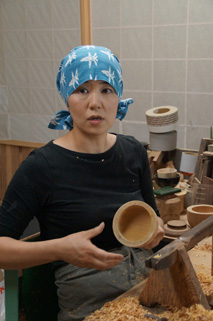
Works that exist in the daily life
While she was studying at the institute, her work won an award at the 49th Japan Traditional Art Crafts Exhibition. After her studies in Ishikawa Prefecture, she came back to Yamagata and started to started creating on her own. Reflecting on her realization during the days she spent in Ishikawa, she is one of the few craftsmen to carry out the entire process from wood turning to lacquer finishing. It is based on her desire to make things that can be used every day.
””Urushi” lacquer becomes stronger with every wash. I don’t know if people knew about this, but so maybe even unconsciously they were thinking about the ease of use. I hope that the items I make are the kind of items people will want to pick up in their hands and use.“. She says. And for that purpose, it is important that the wood turning is done cleanly, and into an easy to use shape. Thus the importance of her job as a wood turner.
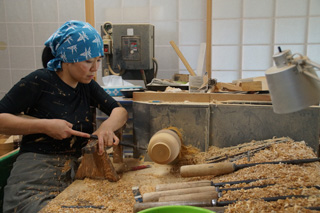
The deep luster of “urushi” lacquer
And after wood turning comes her job as a lacquer artist. It is easy to say just lacquer art as one phrase, but in fact there are so many methods of working with lacquer. Hachiya often tends to use the “fukiurushi” method. Nakata asked why she works with “fukiurushi”, and she replied she actually wanted to work on gold and silver painting but now she is into “fukiurushi” because she realized the depth of the technique.
“This finish is not possible without good woodturning and beautiful finish in unpainted woodwork. “Fukiurushi” literally translates into “wipe lacquer”. Lacquer painted on the raw wood work is wiped away, except the tiny bit that is left on. This process is repeated again and again. This results in a deep luster that is unachievable with other methods. So “fukiurushi” is a very luxurious finish.“
Perhaps her involvement in the entire process, starting with woodturning, enables her to bring out the luxurious beauty of the technique.
Hachiya says she loves discovering beautiful things. She says she notices a lot of “beautiful things” besides her lacquerware. When we mentioned the oriental carpet maker that we visited during our visit to Yamagata, she said that’s one of the things she would like to have some day. She also knew about the Tajine pot that Nakata and Michi Nara collaborated on. “That pot is really interesting” she told us enthusiastically.
